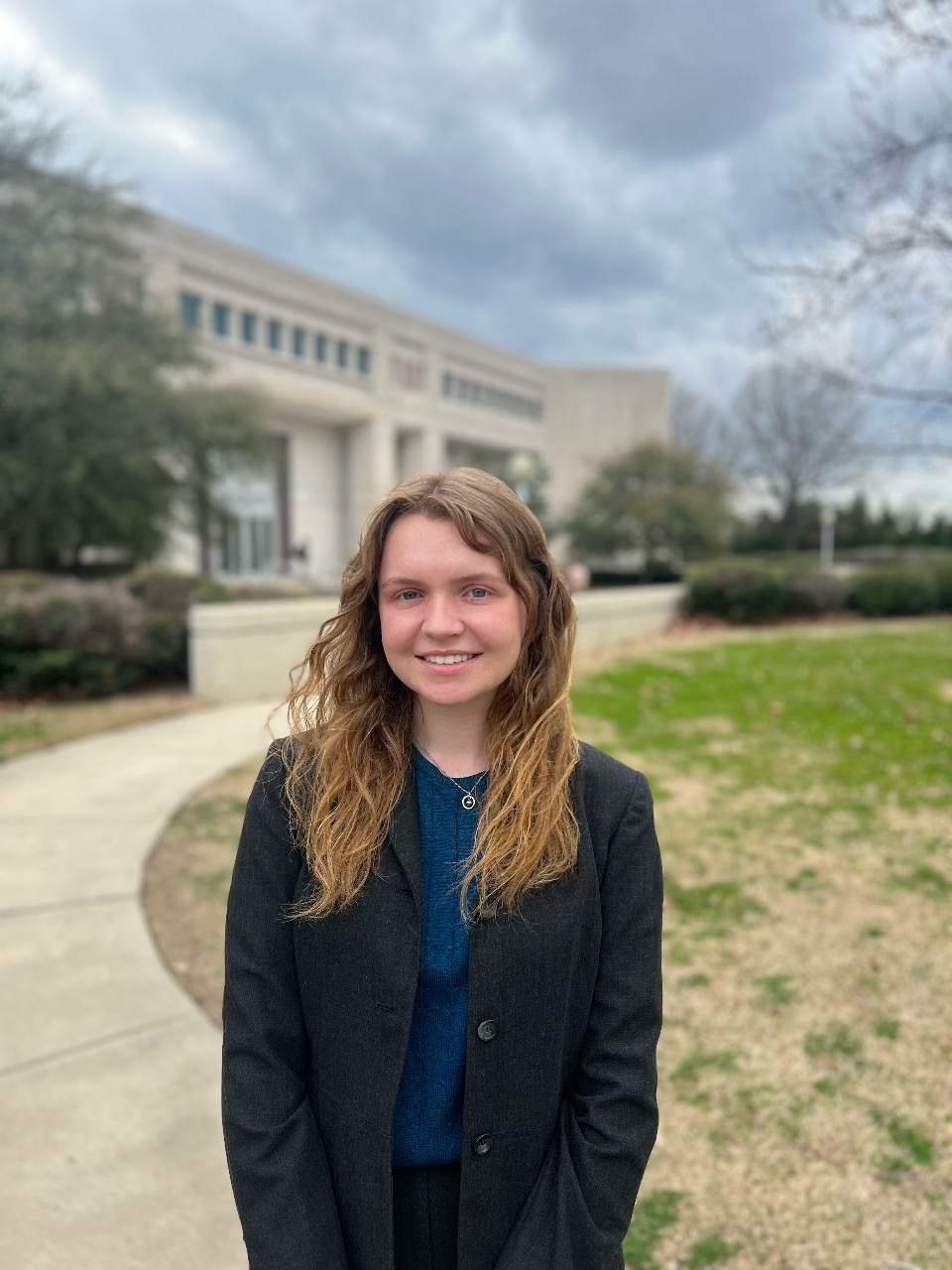Cellular and Molecular Bioengineering
(H-312) Exploring the Link Between Traumatic Brain Injury and Alzheimer’s Disease

Shannon E. DePratter (she/her/hers)
Undergraduate Researcher
University of South Carolina
Columbia, South Carolina, United States- MM
Melissa Moss
Professor and Department Chair
University of South Carolina, United States
Presenting Author(s)
Primary Investigator(s)
Materials and Methods::
THP-1 monocytes are differentiated to macrophages with phorbol 12-myristate 13-acetate (PMA). A pro-inflammatory environment is stimulated by challenge with lipopolysaccharide (LPS) or S100 calcium-binding protein B (S100B) to enhance the release of cytokines into the cell culture media. Supernatant is collected from treated and untreated controls and used to investigate cytokine influence on Aβ aggregation. Supernatant was also analyzed via an enzyme-linked immunosorbent assay (ELISA), allowing for the quantification of cytokine concentrations in a TBI-like environment. Monomeric Ab is isolated via size exclusion chromatography and eluted in 40 mM Tris-HCl buffer (pH 8.0). To monitor aggregation of Ab, 10 µM Ab monomer, cytokines at various concentrations, 20 µM thioflavin T (ThT), 150 mM NaCl, and Tris-HCl buffer are combined in a black-bottom 96 well plate. ThT fluorescence is monitored for 72 hours at 15-minute time intervals using a monochromator plate reader (25ºC, medium shake). From these time curves, the lag time and extent of aggregation are determined.
Results, Conclusions, and Discussions:: For initial understanding of how Ab aggregation is affected by a TBI-like environment, macrophages were stimulated by challenge with LPS, a widely used pro-inflammatory agent, or S100B, a pro-inflammatory agent elevated in AD brain. Ab was aggregated in the presence of the collected supernatant at a 1:4 (buffer:supernatant) ratio, which was determined in preliminary studies as a ratio that optimizes supernatant volume without compromising Ab aggregation. This LPS and S100B data demonstrates that supernatant collected from pro-inflammatory treated macrophages increased aggregation when compared to supernatant collected from untreated cells (Figure 2). Additionally, concentrations from the ELISA will be utilized to guide upcoming individual cytokine experimentation and analysis. Subsequently evaluating individual cytokines, including interleukin (IL)-1, IL-6, IL-8, and tumor necrosis factor alpha (TNF-a), to provide additional insight into the induction of Ab aggregation following TBI.
Acknowledgements (Optional): :
I would like to thank the Biomedical Engineering Program and Moss Lab at the University of South Carolina for this research opportunity.
Additionally, thank you to McNAIR Junior Fellows (MJF) program, SCHC Undergraduate Research Grant, and the Dutton Jr. Foundation for funding this research.
I would also like to thank Dr. Brittany Watson, Jane Waugh, Dr. Melissa Moss, and Dr. Mark Uline for mentoring, teaching, and supporting me throughout this research process.
References (Optional): :
[1] M. C. Dewan, A. Rattani, S. Gupta, et al., 2019, Journal of Neurosurgery, 130(4):1080–1097.
[2] Ramos-Cejudo, J., Wisniewski, T., Marmar, C., Zetterberg, H., Blennow, K., de Leon, M. J., & Fossati, S. (2018). Traumatic brain injury and alzheimer's disease: The cerebrovascular link. EBioMedicine, 28, 21–30. https://doi.org/10.1016/j.ebiom.2018.01.021
[3] Giunta, B. The Immunology of Traumatic Brain Injury: A prime target for Alzheimer’s disease prevention. Journal of Neuroinflammation, 9(1). https://doi.org/10.1186/1742-2094-9-185 (2012).
[4] Drolle, E., Hane, F., Lee, B., & Leonenko, Z. (2014). Atomic Force Microscopy to study molecular mechanisms of amyloid fibril formation and toxicity in alzheimer’s disease. Drug Metabolism Reviews, 46(2), 207–223. https://doi.org/10.3109/03602532.2014.882354
[5] Morales, I., Farías, G., & Maccioni, R. B. (2010). Neuroimmunomodulation in the pathogenesis of alzheimer’s disease. National Library of Medicine, 17(3), 202–204. https://doi.org/10.1159/000258724
[6] U.S. Department of Health and Human Services. (2021, July 8). Alzheimer's Disease and Related Dimentias. National Institute on Aging. Retrieved from https://www.nia.nih.gov/health/alzheimers-disease-fact-sheet
